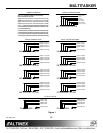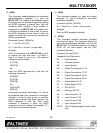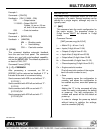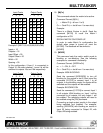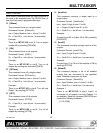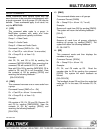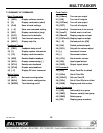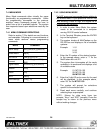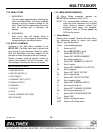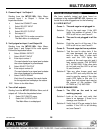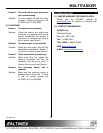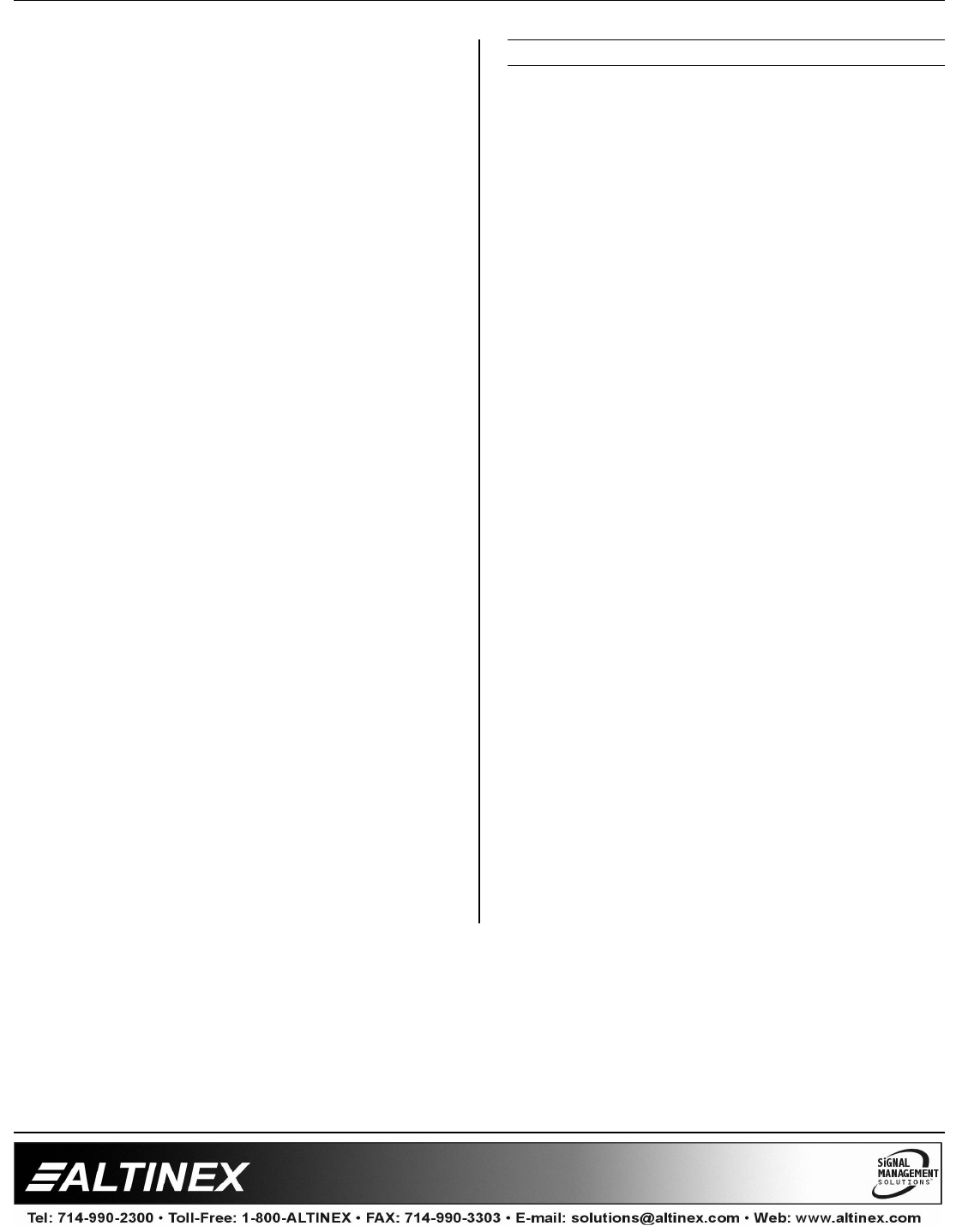
MULTITASKER
400-0367-005 20
35. [SDO]
This command detects if there is a signal
present on one output or all outputs. The
system will return feedback along the following:
Command Format, One Output: [SDOmmCn]
Command Format, All Outputs: [SDOCn]
mm = Output (2-digit # from 01 to 64)
Cn = Card ID (n = slot # from 1 to max slots)
Feedback Format: [OxxSyCn]
xx = Input number ( 2-digit #, 01-64 )
y = Signal present (1=signal, 0=no signal)
Cn = Card ID (n = slot # from 1 to max slots)
Example 1:
Check for a signal on Output 1 of C8 by sending
[SDO01C8]. If a signal present on Output 1, the
following feedback will be displayed:
[O01S1C08]
Example 2:
Check for a signal on all outputs of C8 by
sending [SDOC8]. In the example below, there
is a signal is present on Output 1, but the rest
have no signals. The MT107-103 will return the
following feedback:
[O01S1C08] [O02S0C08] [O03S0C08]
[O04S0C08] [O05S0C08] [O06S0C08]
[O07S0C08] [O08S0C08]
… [O63S0C08] [O64S0C08]
ID COMMANDS
The default card ID is the same as the card slot
number. The next several commands allow the
user to change the card ID to a value other than
the slot number. Once the ID is changed, moving
the card to another slot will not change the card ID.
If a card in slot 4 is set to ID 1, then moved to slot
10, its ID will remain 1. The [RSI] command forces
each installed card to take its slot number as its ID
number, regardless of the slot in which it is
installed.
Some cards require more than one slot in the
MultiTasker system. As an example, some matrix
switcher cards require 4 slots. If 5 cards are
installed, they would be numbered C4, C8, C12,
C16, and C20. Changing the ID allows the user to
define the cards as C1, C2, C3, C4, and C5.
Another use for changing the card ID is to be able
to use multiple systems without having to set each
unit to a different unit ID. All systems may be left as
unit ID 0 for ease of programming. The cards in the
first unit may be numbered 1-10 and in the second
unit 11-20.
36. [RSI]
This command resets the card IDs in the
system. After sending this command, each card
ID in the system will match the slot number of
the card. If the card is moved to another slot, its
ID number will be the new slot number.
Command Format: [RSI]
Example:
Send the command [RSI] to the system with
Unit ID 0. The card in slot 1 will have ID 1, the
card in slot 2 will have ID 2, and so on. If the
card in slot 1 is then moved to slot 4, the card ID
will then be 4.



